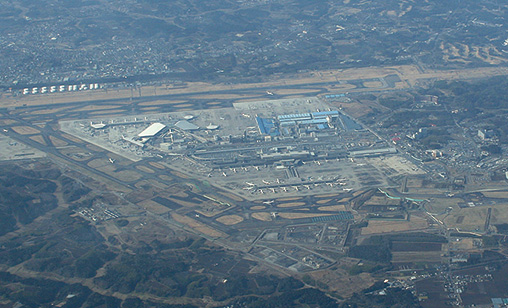News Backgrounder
Narita courts neighbours to advance expansion plans
Tokyo Narita opened in May 1978 after a bitter and sometimes violent 16-year dispute with local landowners, farmers and residents opposed to the development. Almost forty years later, the Chiba prefecture airport is planning the biggest expansion in its history as visitors to Japan surge.
July 1st 2017
As Japan’s government sets an aggressive inbound tourism target of 40 million visitors by 2020 – double this year’s numbers – management at Narita International Airport Corporation (NAA) are increasingly confident they will win approval for a multi-billion dollar expansion, including a third runway and expanded terminal space, at the greater Tokyo area facility. Read More »
The US$2 billion plus plan includes an extension of the airport’s second short runway, a reduction in the 10pm to 6am daily curfew and an increase in aircraft movements from 300,000 a year to 500,000, NAA vice president, corporate planning division, Hideharu Miyamoto, told Orient Aviation at the International Air Transport Association annual general meeting in Mexico.
 |
He said he was confident most of the changes would win approval “because times have changed”. When the airport was being built, he said, “many people, when they were very young, strongly opposed the development. Now they are older or have moved away, people are thinking about the economic advantages the airport brings, not only to them, but for future generations”.
And both the airport operator and local politicians have learnt another lesson, Miyamoto said. In the seventies, when the airport was under construction, there was little consultation with local residents and their land was acquired forcibly. “The government understands people had opposed the new airport because there was no deep discussion. Now, there is,” he said.
“We need discussion to fully explain what is the thinking and the strategy behind expansion. It’s a matter of communication. That’s the change.”
NAA intends to spend $1.1 billion to extend the existing 2,500 metre second runway to 3,000 metres. It also will build a 3,500 metre runway west of the airport that will lengthen the existing main runway to 4,000 metres.
When the second runway was designed in the seventies, it had to be short because the engineering technology of the time did not extend to building a bridge that could traverse the Narita to Tokyo highway. No such constraints apply today.
Leading up to Narita’s opening almost 40 years ago, eight farmers opposed NAA’s development. Now there are only two, said Miyamoto. Most of the land for the third runway is owned by the NAA. “That’s the challenge. In the past, local government used force to acquire the land. We won’t take that course, but will negotiate in a friendly way. Of course, we are receiving co-operation from local government,” he said.
NAA wants a 1am to 5am curfew. “Other airports in the region, including Haneda (Tokyo’s downtown airport) to the city), operate for 24 hours. If we are to compete with them we need more flexibility, especially if we are to increase inbound tourism,” he said.
“Airlines need more flexible scheduling at Narita in the early morning and also for departures late at night. The second market [for us] is low-cost carriers. They require more efficient operations from early morning to late at night which the present curfew prevents.” Miyamoto said any reduction in the curfew would “be a gain”.
The runway extansions are unlikely to be completed in time for the 2020 Tokyo Olympic Games because negotiations with effected landholders will be protracted. However, the general consensus among analysts is that the tumultuous protests of the past will not be repeated.
Expansion at Haneda is constrained so NAA’s development is critical to meeting the government’s new target of 40 million visitors by 2020 and 60 million tourists by 2030. Narita handles 39 million passengers and 2.1 million tons of cargo a year, with 97 airlines serving 109 international and 17 domestic destinations from the airport.